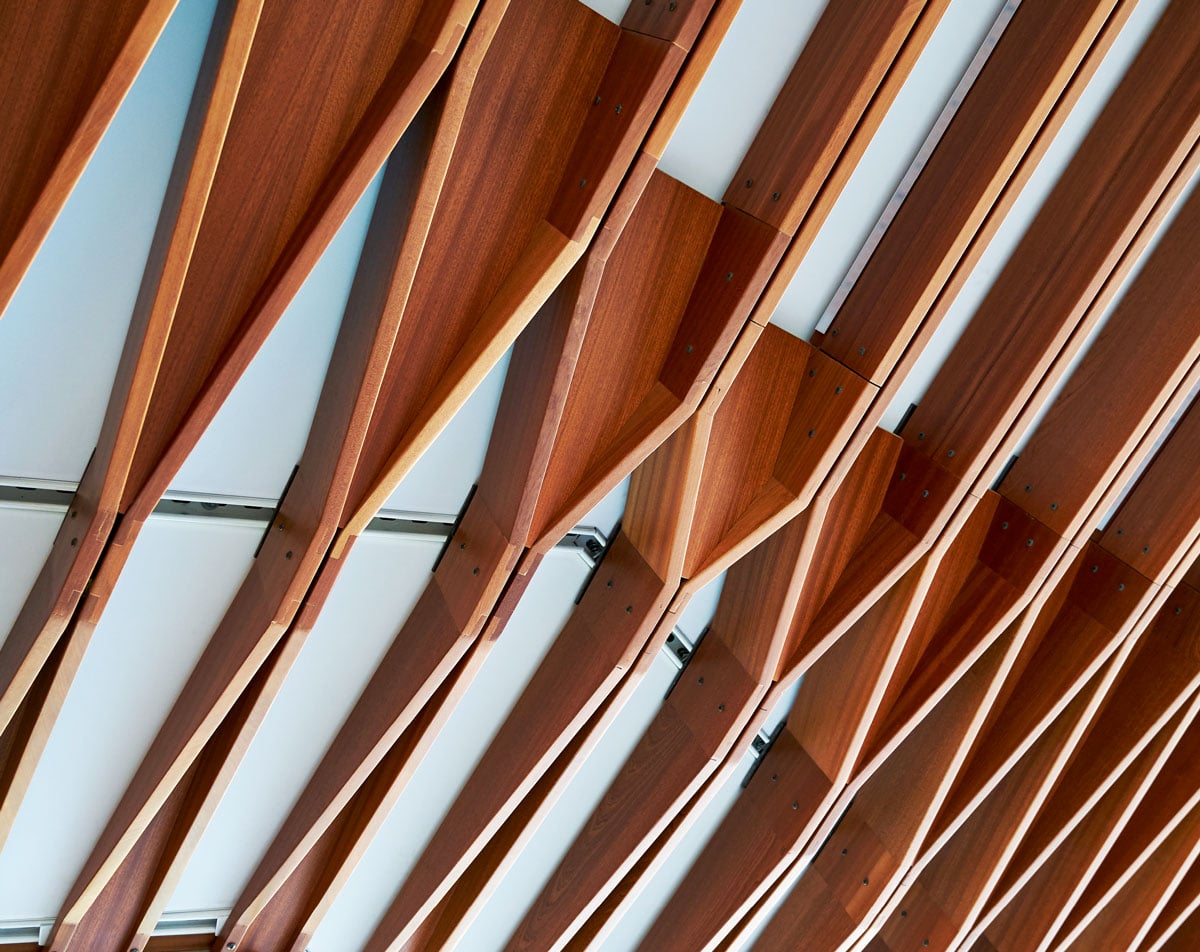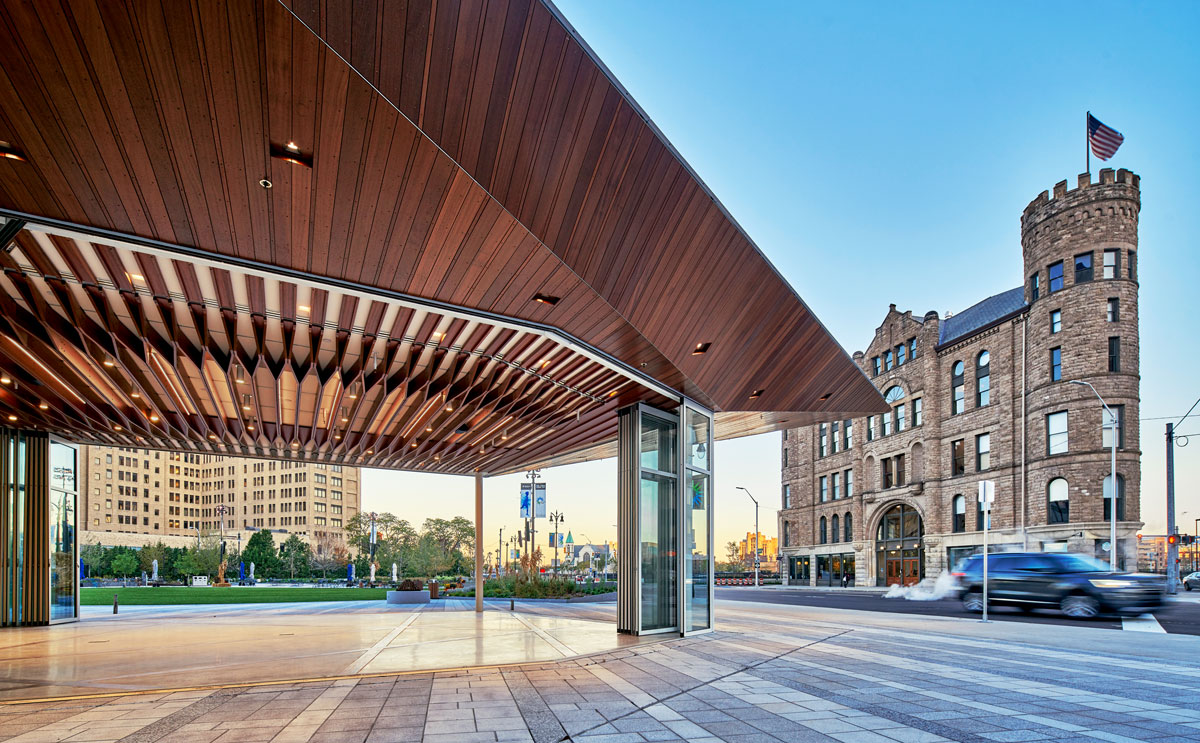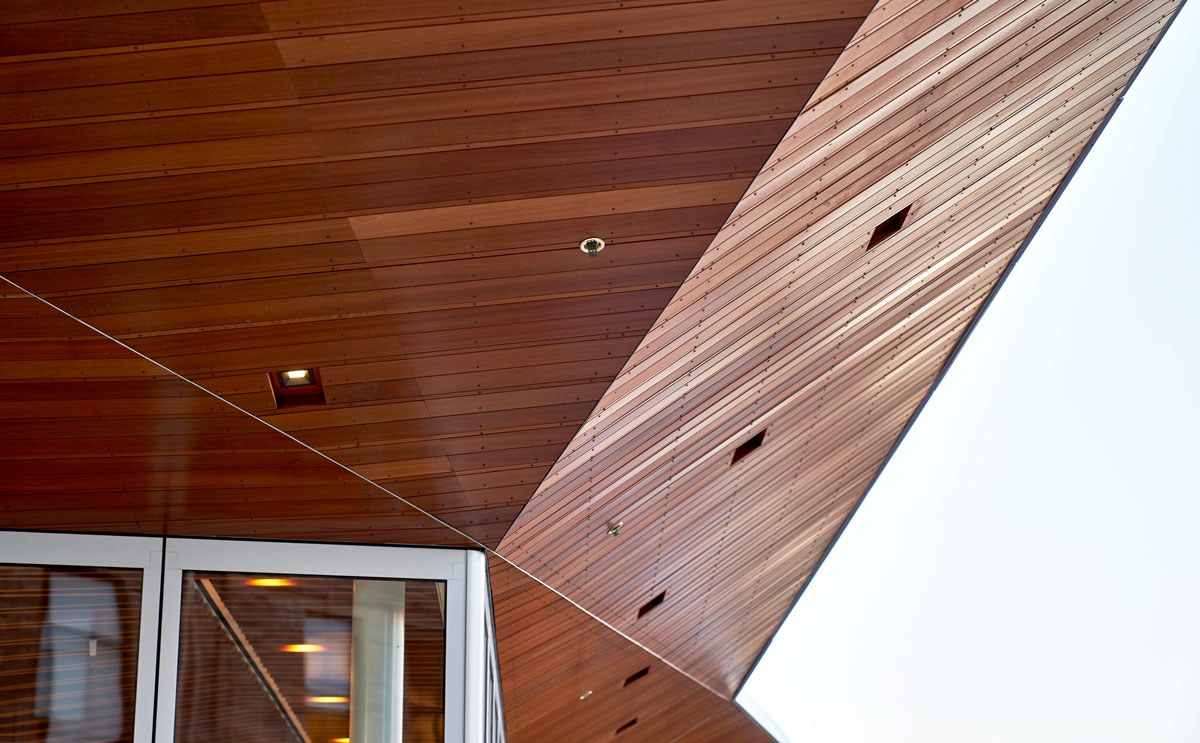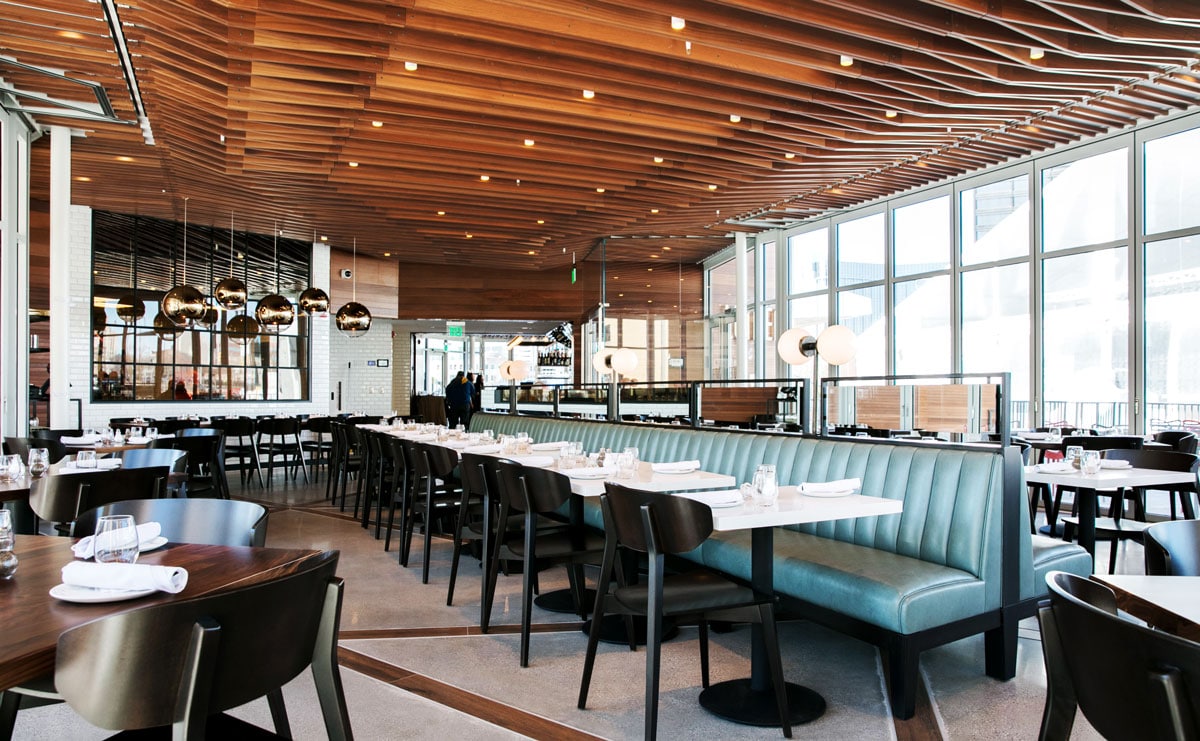
This downtown Detroit restaurant, designed by Touloukian Touloukian, emphasizes sustainability with indoor-outdoor social spaces and recycled materials. [Photo: Jason Keen]
PROJECT: Beacon Park–Lumen Restaurant LOCATION: Detroit, MI SIZE: 9,835 square feet COMPLETION: April 2018 ARCHITECT: Theodore Touloukian LANDSCAPE ARCHITECT: livingLAB STRUCTURAL ARCHITECT: Studio NYL
In the center of downtown Detroit, the new Beacon Park—Lumen Restaurant project offers a vibrant public space where the community can dine, socialize, and interact with nature. Architect Theodore Touloukian designed the space as a green cultural hub for downtown, as the neighborhood continues to thrive.
gb&d: What role does this project play in the revitalization of downtown Detroit?
Touloukian: Beacon Park–Lumen Restaurant, along Grand River Avenue, welcomes visitors into the center of downtown. This urban revitalization project and new public space was created to anchor the emerging neighborhood, spur economic development, and provide a quality space for the community.

[Photo: Jason Keen]
gb&d: What was most exciting to you about designing the building?
Touloukian: The entire process was exciting. As an architect it was a great opportunity, as we were able to develop a building and space that’s tied to Detroit’s history, culture, and future. We wanted the project to revitalize an abandoned lot, extend seamlessly off of the public way along Grand River Avenue, and flow into the park lawn. We worked closely with the landscape architect and structural and MEP engineers to design a building that is creatively integrated with all the professional disciplines.
The project is unique to the city in that it has provided a modern statement for Detroit. Central to its modern geometry are strong cantilevered roof forms gesturing toward the historic GAR. building and the park’s elliptical lawn, and a grand stair leading to a roof deck on axis with the historic Book Tower building. Folding glass walls provide the opportunity for flexible indoor-outdoor spaces where the public can enjoy restaurant seating and the possibility for markets, music, and community meetings.

[Photo: Jason Keen]

Touloukian and his team successfully concealed the building’s mechanical systems using creative, structural design. [Photo: Jason Keen]
We were also inspired by the automotive heritage of Detroit and the mid-century sculptural “muscle car.” The efficiency, compactness, and beauty of this vehicle was relatable to the design challenges we faced in creating flexible spaces and influenced our decisions behind design intent and aesthetic.
gb&d: What were your biggest priorities going into this design?
Touloukian: Our main priority was to create a contemporary building for the city that respects the great heritage of its historic buildings. The design welcomes the public into indoor-outdoor social spaces through an adaptable floor plan that engages a variety of social environments. We worked with the client to choose materials that would best support this goal. After several material studies, a combination of sapele mahogany wood, metal panel, precast concrete, and a green roof were selected. On the interior, the same mahogany wood was used in ceiling louvers and wall paneling, which was balanced against white acoustic fabric to create a welcoming and acoustically sensitive space.

[Photo: Michelle Gerrard]
gb&d: How is environmental sustainability part of the design?
Touloukian: Resilience and sustainability is a core part of our practice. Improving thermal performance while providing high levels of transparency was critical to the design and LEED Silver (pending) certification. The design team implemented thermal breaks between steel members that pass through the thermal envelope, filled hollow structural section members with spray foam insulation, specified high-energy performance glazing, and continuously sprayed steel and metal decks to reduce thermal transfer. Additional sustainability efforts included the use of alternative transportation methods, recycled materials, Forest Stewardship Council–certified wood, and on-site rain infiltration systems.
gb&d: What was this project’s biggest challenge?
Touloukian: The biggest challenge was concealing all of the building systems into a high-performing envelope while still maintaining the overall sculptural design quality. The structural system utilizes steel and concrete in a series of complex interdisciplinary details, angles, elevations, and connections. The main roof framing has two primary trusses that are concealed within the roof deck parapet walls. In addition to supporting the roof deck, steel outriggers, folding glass walls, and fall protection, these trusses and outriggers integrate large penetrations of mechanical ductwork, piping, fire protection, and electrical systems. A mechanical attic space is strategically concealed within the building form and ventilated with louvers and grilles as a part of the overall design intent.

[Photo: Jason Keen]
gb&d: How do you hope the community interacts with this space?
Touloukian: By providing an adaptable public building, the spaces reach out to engage the park and the local community. The client retained a management firm to organize programming that activates the park and building with events that range from team volleyball, family concerts, community yoga, night markets, and professional sport team appearances. Our hope is that the project is a precedent for other revitalization efforts, is able to be enjoyed, and is equitable for all.
gb&d: What about this project was most surprising?
Touloukian: A small building footprint can function and operate as a much larger public space. This is a result of efficient interior planning that utilizes operable glass walls to extend the occupiable space beyond the cantilevered soffits and into the park beyond.
gb&d: If you could implement one change in the way all restaurants were designed to make them more sustainable, what would it be?
Touloukian: To provide the patronage access to fresh air, light, some type of outdoor space, and most importantly good food. We found cooking takes a lot of energy relative to LEED projects, and we found it challenging to provide high-efficiency equipment.
